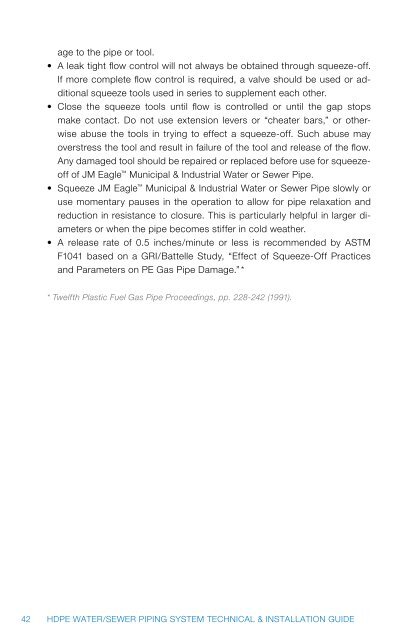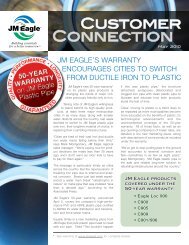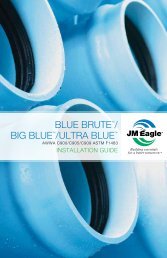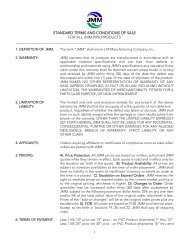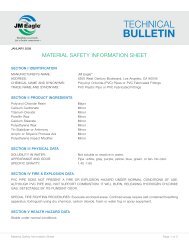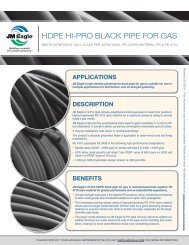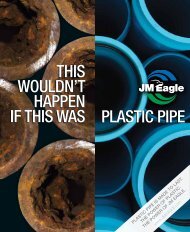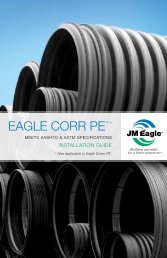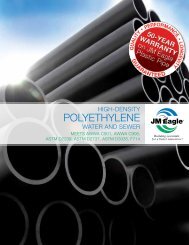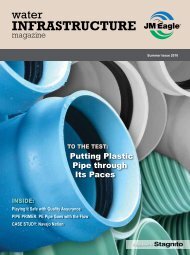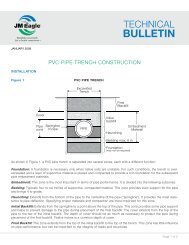Polyethylene Water/Sewer - JM Eagle
Polyethylene Water/Sewer - JM Eagle
Polyethylene Water/Sewer - JM Eagle
- No tags were found...
Create successful ePaper yourself
Turn your PDF publications into a flip-book with our unique Google optimized e-Paper software.
age to the pipe or tool.• A leak tight flow control will not always be obtained through squeeze-off.If more complete flow control is required, a valve should be used or additionalsqueeze tools used in series to supplement each other.• Close the squeeze tools until flow is controlled or until the gap stopsmake contact. Do not use extension levers or “cheater bars,” or otherwiseabuse the tools in trying to effect a squeeze-off. Such abuse mayoverstress the tool and result in failure of the tool and release of the flow.Any damaged tool should be repaired or replaced before use for squeezeoffof <strong>JM</strong> <strong>Eagle</strong> Municipal & Industrial <strong>Water</strong> or <strong>Sewer</strong> Pipe.• Squeeze <strong>JM</strong> <strong>Eagle</strong> Municipal & Industrial <strong>Water</strong> or <strong>Sewer</strong> Pipe slowly oruse momentary pauses in the operation to allow for pipe relaxation andreduction in resistance to closure. This is particularly helpful in larger diametersor when the pipe becomes stiffer in cold weather.• A release rate of 0.5 inches/minute or less is recommended by ASTMF1041 based on a GRI/Battelle Study, “Effect of Squeeze-Off Practicesand Parameters on PE Gas Pipe Damage.” ** Twelfth Plastic Fuel Gas Pipe Proceedings, pp. 228-242 (1991).42 HDPE WATER/SEWER PIPING SYSTEM TECHNICAL & INSTALLATION GUIDE


